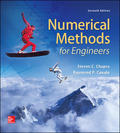
The following data was collected for a cross-section of a river (y= 5 distance from bank, H = 5 depth, and U = velocity):
| y, m | 0 | 1 | 3 | 5 | 7 | 8 | 9 | 10 |
| H, m | 0 | 1 | 1.5 | 3 | 3.5 | 3.2 | 2 | 0 |
| U, m/s | 0 | 0.1 | 0.12 | 0.2 | 0.25 | 0.3 | 0.15 | 0 |
Use numerical
(a) Average depth,
(b) Cross-sectional area,
(c) Average velocity, and
(d) The flow rate
Note that the cross-sectional area (Ac) and the flow rate (Q) can becomputed as
Want to see the full answer?
Check out a sample textbook solution
Chapter 21 Solutions
EBK NUMERICAL METHODS FOR ENGINEERS
Additional Engineering Textbook Solutions
Elementary Statistics ( 3rd International Edition ) Isbn:9781260092561
Pathways To Math Literacy (looseleaf)
Intermediate Algebra (13th Edition)
Graphical Approach To College Algebra
College Algebra (7th Edition)
Elementary Statistics: A Step By Step Approach
- 1. Sketch the following sets and determine which are domains: (a) |z−2+i| ≤ 1; - (c) Imz> 1; (e) 0≤ arg z≤ л/4 (z ± 0); Ans. (b), (c) are domains. (b) |2z+3| > 4; (d) Im z = 1; - (f) | z − 4| ≥ |z.arrow_forwardSo let's see, the first one is the first one, and the second one is based on the first one!!arrow_forward4. In each case, sketch the closure of the set: (a) -л 0.arrow_forward
- 1. For each of the functions below, describe the domain of definition that is understood: 1 (a) f(z) = (b) f(z) = Arg z²+1 Z 1 (c) f(z) = (d) f(z) = 1 - | z | 2° Ans. (a) z±i; (b) Rez 0.arrow_forward44 4. Write the function f(x)=2+ ANALYTIC FUNCTIONS 1 (z = 0) Z. in the form f(z) = u(r, 0) + iv(r, 0). Ans. f(z) = = (1 + ² ) cos+ir i ( r — 1 ) sin 0. r CHAP. 2arrow_forwardGiven the (3-2-1) Euler angle set (10,20,30) degrees, find the equivalent (3-1-3) Euler angles. All the following Euler angle sets are 3-2-1 Euler angles. The B frame relative to N is given through the 3-2-1 EAs (10,20,30) degrees, while R relative to N is given by the EAs (-5,5,5) degrees. What is the attitude of B relative to R in terms of the 3-2-1 EAsarrow_forward
- 3. Suppose that f(z) = x² − y² −2y+i (2x-2xy), where z = x+iy. Use the expressions (see Sec. 6) x = z┼え 2 Z - Z and y = 2i to write f(z) in terms of z, and simplify the result. Ans. f(z)²+2iz.arrow_forward10. Prove that a finite set of points Z1, Z2, Zn cannot have any accumulation points.arrow_forward6. Show that a set S is open if and only if each point in S is an interior point.arrow_forward
- 2. Derive the component transformation equations for tensors shown be- low where [C] = [BA] is the direction cosine matrix from frame A to B. B[T] = [C]^[T][C]T 3. The transport theorem for vectors shows that the time derivative can be constructed from two parts: the first is an explicit frame-dependent change of the vector whereas the second is an active rotational change of the vector. The same holds true for tensors. Starting from the previous result, derive a version of transport theorem for tensors. [C] (^[T])[C] = dt d B dt B [T] + [WB/A]B[T] – TWB/A] (10 pt) (7pt)arrow_forwardShade the areas givenarrow_forwardof prove- Let (X, Td) be aspace. show that if A closed set in X and r & A, thend (r,A) +0arrow_forward
- Algebra & Trigonometry with Analytic GeometryAlgebraISBN:9781133382119Author:SwokowskiPublisher:Cengage
 Algebra: Structure And Method, Book 1AlgebraISBN:9780395977224Author:Richard G. Brown, Mary P. Dolciani, Robert H. Sorgenfrey, William L. ColePublisher:McDougal Littell
Algebra: Structure And Method, Book 1AlgebraISBN:9780395977224Author:Richard G. Brown, Mary P. Dolciani, Robert H. Sorgenfrey, William L. ColePublisher:McDougal Littell

